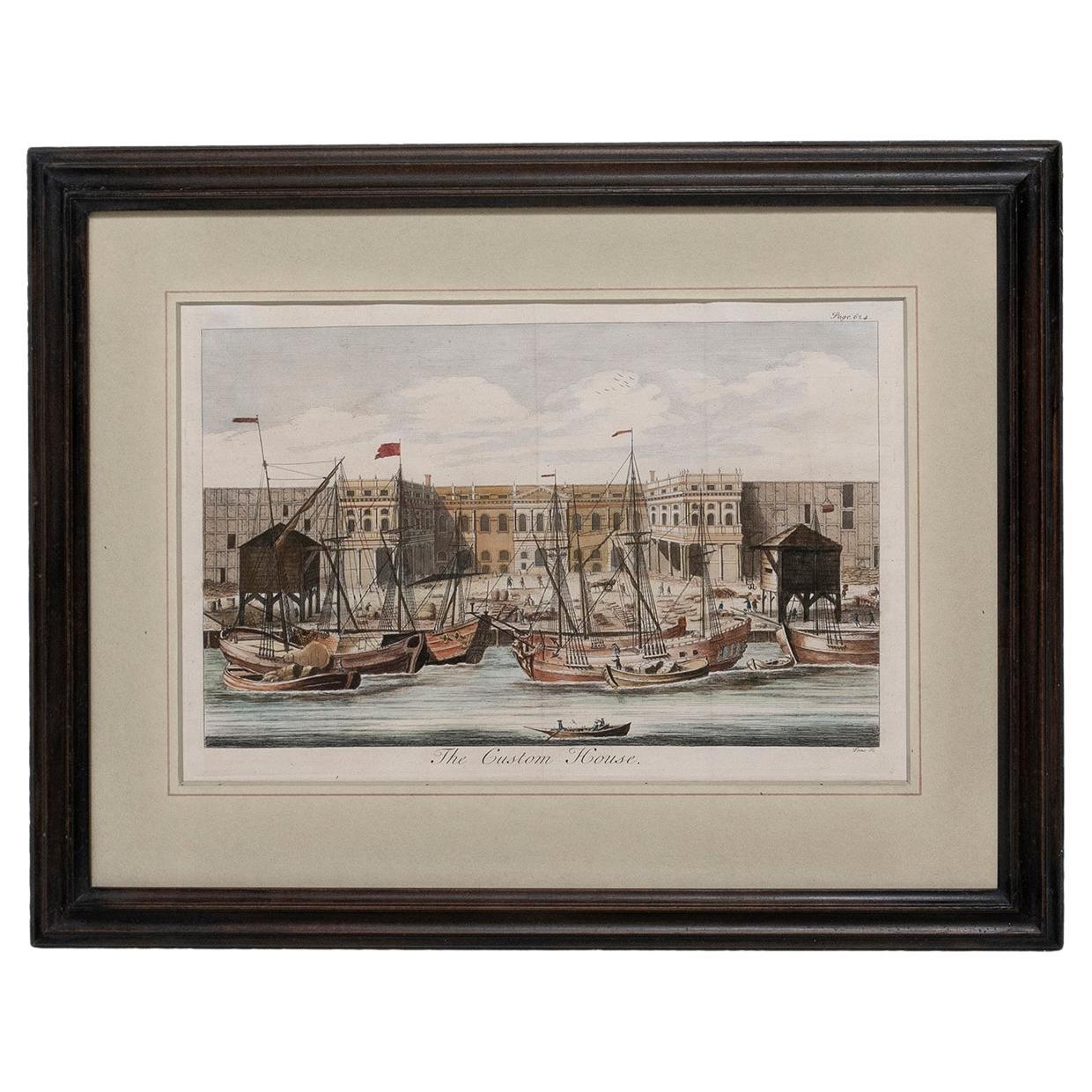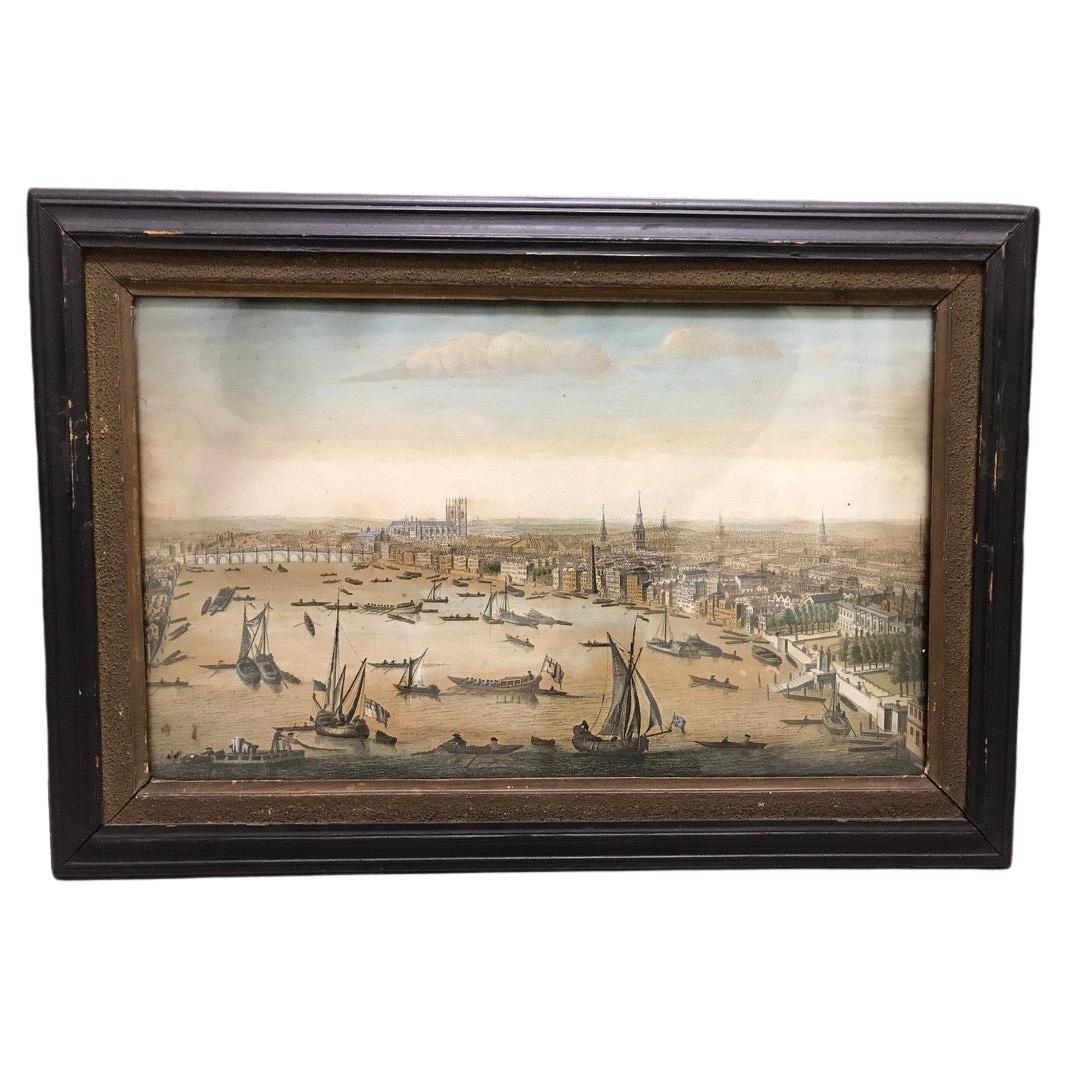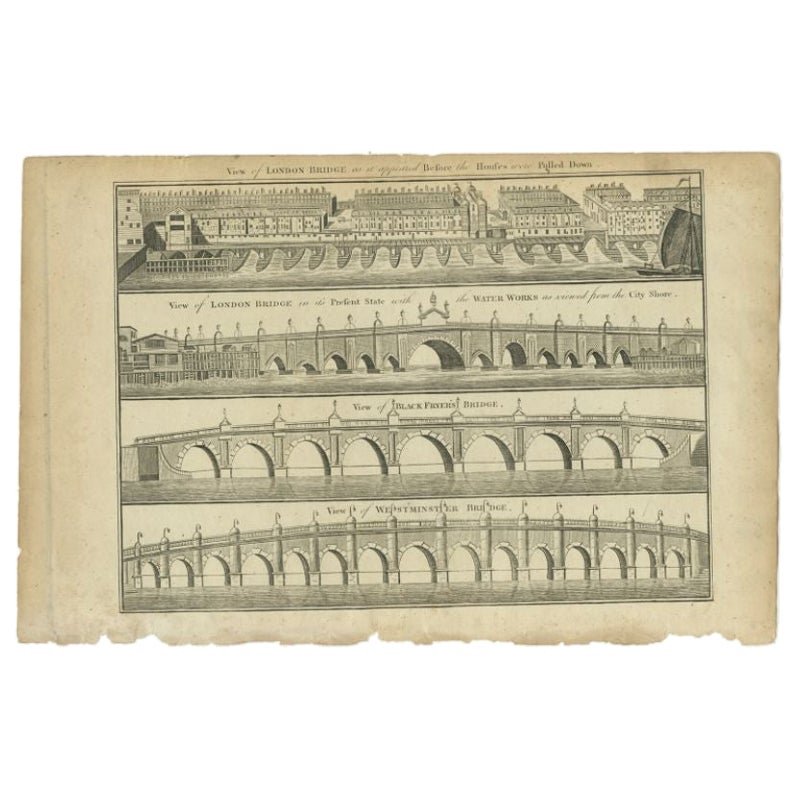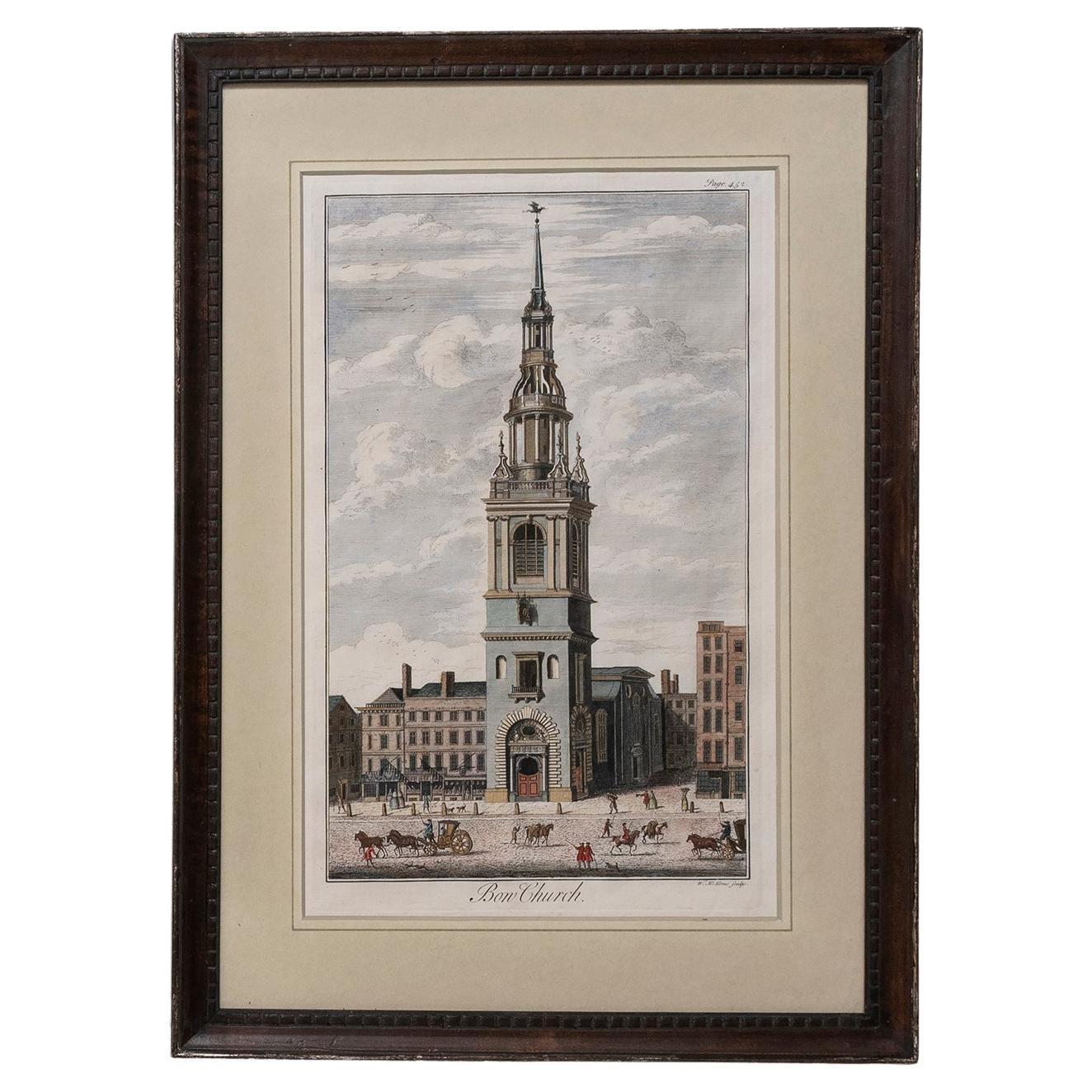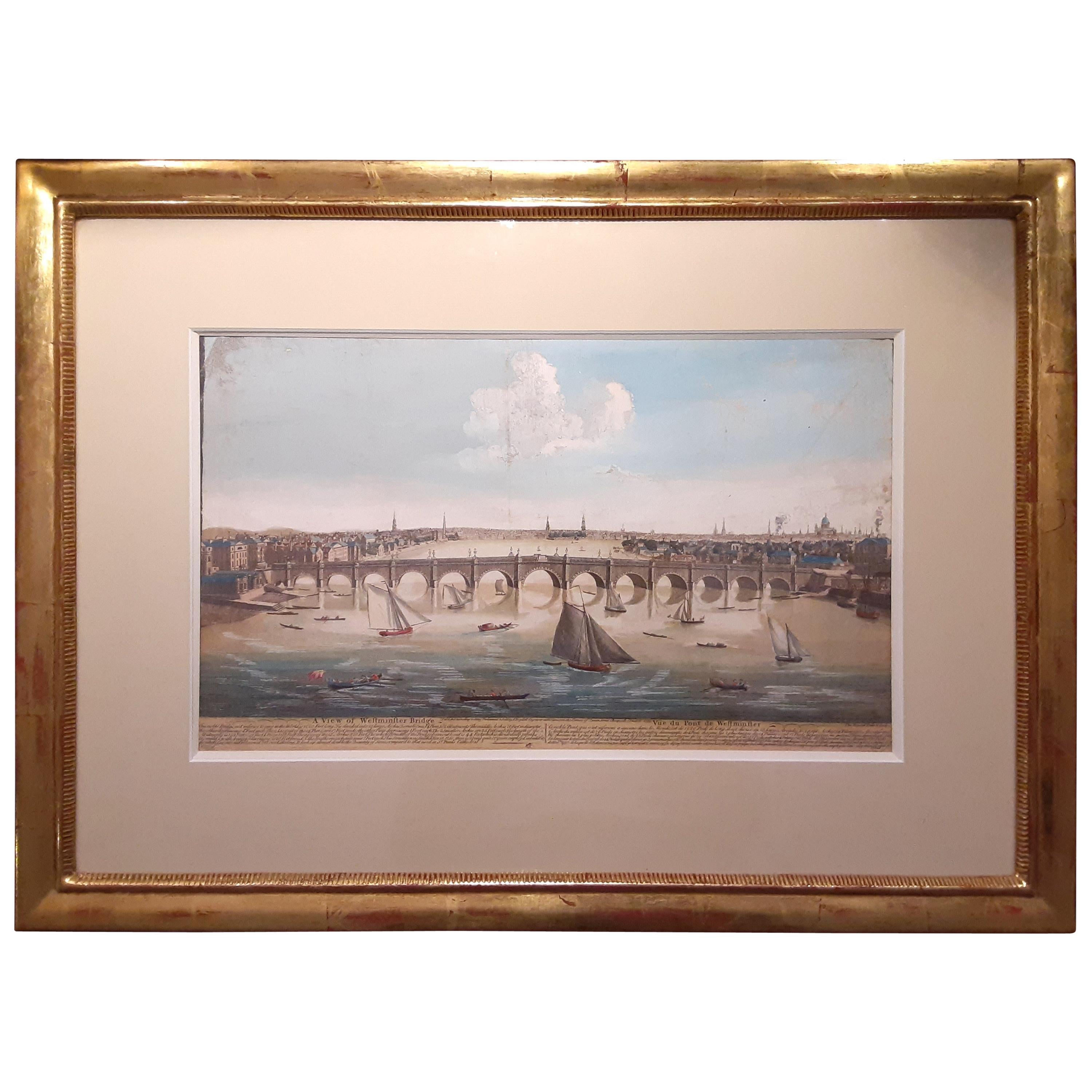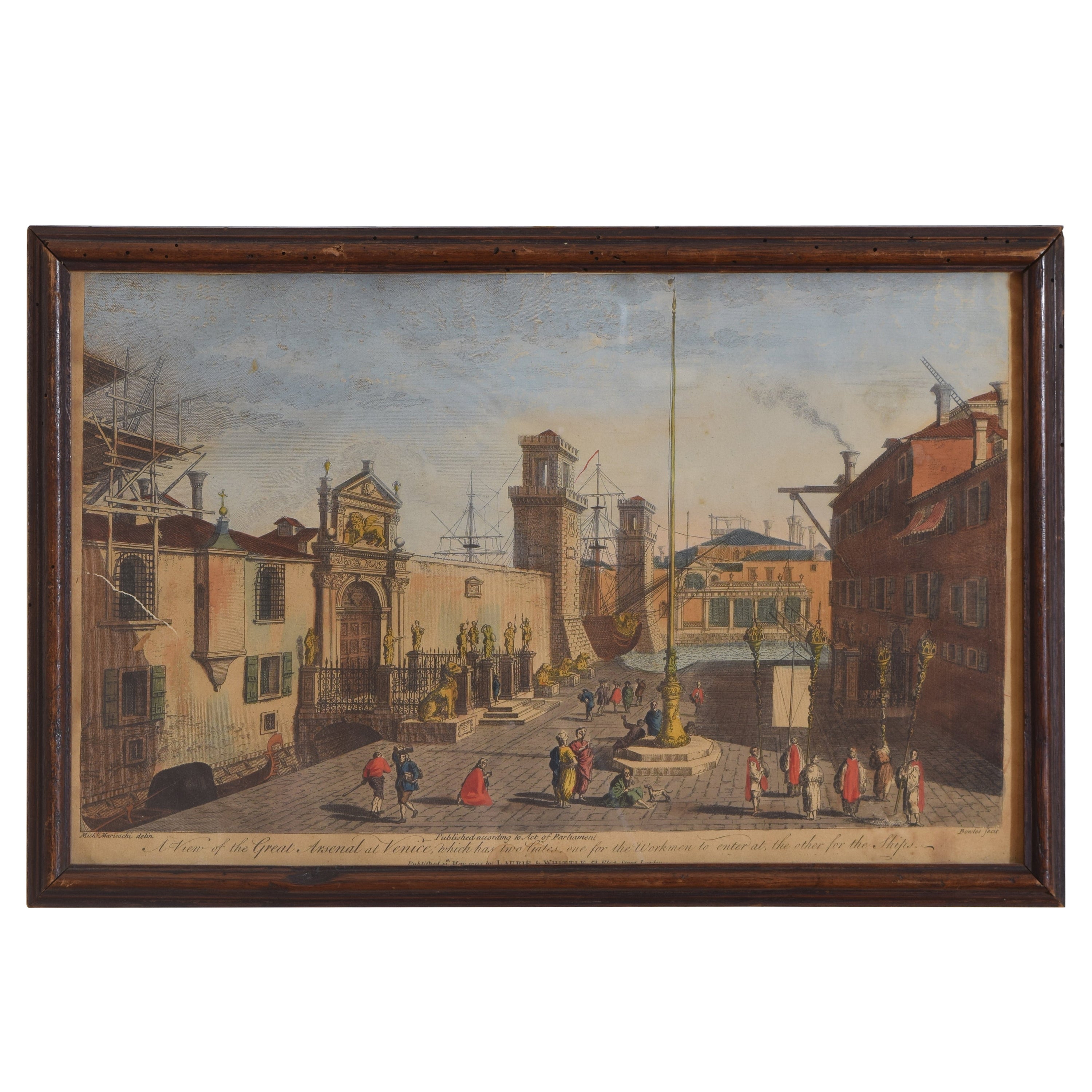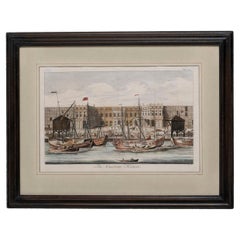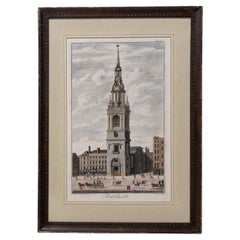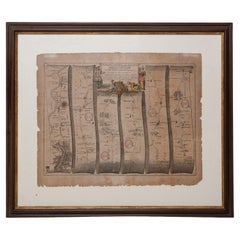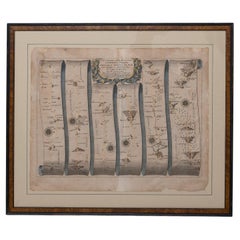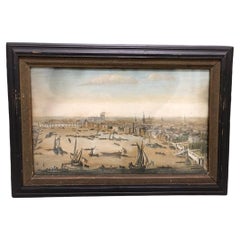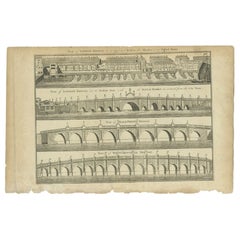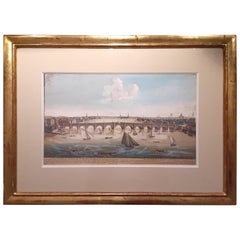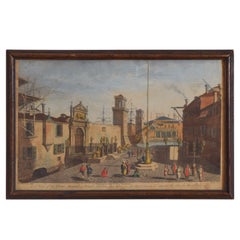Items Similar to Print, Handcolored, Copperplate, Engraved, London Bridge, William Maitland, 1739
Want more images or videos?
Request additional images or videos from the seller
1 of 7
Print, Handcolored, Copperplate, Engraved, London Bridge, William Maitland, 1739
$2,766.25
£2,000
€2,351.44
CA$3,820.16
A$4,191.63
CHF 2,193.70
MX$51,584.76
NOK 27,637.38
SEK 25,886.52
DKK 17,557.95
About the Item
In original condition. Page 33, 'The History of London from its Foundation by the Romans to the Present Time', by William Maitland, published in 1739.
Artist William Maitland (c. 1693-1757)
Acquired along with the custom house, and bow church
In a wooden frame.
- Dimensions:Height: 14.57 in (37 cm)Width: 19.1 in (48.5 cm)Depth: 0.4 in (1 cm)
- Style:George II (Of the Period)
- Materials and Techniques:
- Place of Origin:
- Period:
- Date of Manufacture:1739
- Condition:Wear consistent with age and use.
- Seller Location:BUNGAY, GB
- Reference Number:1stDibs: LU3867332632782
About the Seller
5.0
Vetted Professional Seller
Every seller passes strict standards for authenticity and reliability
Established in 1985
1stDibs seller since 2018
99 sales on 1stDibs
Typical response time: 9 hours
- ShippingRetrieving quote...Shipping from: BUNGAY, United Kingdom
- Return Policy
Authenticity Guarantee
In the unlikely event there’s an issue with an item’s authenticity, contact us within 1 year for a full refund. DetailsMoney-Back Guarantee
If your item is not as described, is damaged in transit, or does not arrive, contact us within 7 days for a full refund. Details24-Hour Cancellation
You have a 24-hour grace period in which to reconsider your purchase, with no questions asked.Vetted Professional Sellers
Our world-class sellers must adhere to strict standards for service and quality, maintaining the integrity of our listings.Price-Match Guarantee
If you find that a seller listed the same item for a lower price elsewhere, we’ll match it.Trusted Global Delivery
Our best-in-class carrier network provides specialized shipping options worldwide, including custom delivery.More From This Seller
View AllPrint, Hand-Colored, Copperplate, Engraved, Custom House, William Maitland
Located in BUNGAY, SUFFOLK
In original condition. Page 624, 'The History of London from its Foundation by the Romans to the Present Time', by William Maitland, published in 1739...
Category
Antique 1730s British George II Prints
Materials
Paper
Print, English George II, Hand-Colored, Copperplate, Engraved, Bow Church, 1739
Located in BUNGAY, SUFFOLK
In original condition. Page 452, 'The History of London from its Foundation by the Romans to the Present Time', by William Maitland, published in 1739...
Category
Antique 1730s British George II Prints
Materials
Paper
Road Map Britannia No 25 London to the Lands End, John Ogilby Brown Gilded Frame
By John Ogilby
Located in BUNGAY, SUFFOLK
The road from London to the lands end. Commencing at the Standard in Cornhill and extending to Senan in Cornwall. By John Ogilby His Majesties Cosmographer. A road map from Britannia, 1675/6. No 25.
Continuing 308 miles, 3 furlongs.
London Southwark to Brentford, to Hampton Court, to Hounslow, to Windsor, to Cobham, to Farnham, to Basingstoke to Winchester
The handcoloured sheet free floated. In a brown painted and gilded, ogee moulded frame. Some foxing and creasing, uneven edge of sheet, all commensurate with age
Provenance : purchased as pair from a collector with no 15 London to St David's. Framed as a pair.
Sheet width 48cm., 19 ”., height 38cm., 15 “
Frame width 66.5cm., 26”., height 56cm., 22 ”
In a remarkable life John Ogilby pursued, several careers, each ending in misfortune, and yet he always emerged undeterred, to carry on. His modern reputation is based on his final career, started i
Black Linear Border around Map Length 44cm., 17 1/8" Height 32cm., 12 1/2"
Full Sheet Length 58cm., 22 3/4" Height 38cm., 15"
Frame Length 66cm., 26"., Height 56cm., 22"
In a remarkable life John Ogilby pursued, several careers, each ending in misfortune, and yet he always emerged undeterred, to carry on. His modern reputation is based on his final career, started in his sixty-sixth year, as a publisher of maps and geographical accounts.
Ogilby was born outside Dundee, in 1600, the son of a Scottish gentleman. While he was still a child, the family moved to London. When the elder Ogilby was imprisoned for debt, the young John invested his savings in a lottery, won a minor prize, and settled his father's debts. Unfortunately, not enough money was left to secure John a good apprenticeship; instead, he was apprenticed to a dance master. Ogilby was soon dancing in masques at court but, one day, while executing a particularly ambitious leap, he landed badly. The accident left him with a permanent limp, and ended his dancing career. However, he had come to the attention of Thomas Wentworth, later Earl of Strafford, Charles I's most senior minister. Ever one to exploit his contacts, Ogilby became a dance instructor in Strafford's household.
When Strafford was sent to Ireland, Ogilby accompanied him as Deputy-Master of the Kings Revels, and then Master of Revels. In Dublin, he built the New Theatre, in St. Werburgh Street, which prospered at first, but the Irish Rebellion, in 1641, cost Ogilby his fortune, which he estimated at £2,000, and almost his life. After brief service as a soldier, he returned to England, survived shipwreck on the way, and arrived back penniless.
On his return, Ogilby turned his attention to the Latin classics, as a translator and publisher. His first faltering attempt, in 1649, was a translation of the works of Virgil, but after his marriage to a wealthy widow the same year, his publishing activities received a considerable boost. One means by which Ogilby financed these volumes was by subscription, securing advance payments from his patrons, in return for including their name and coats-of-arms on the plates of illustrations. Another approach was to secure a patron, preferably in the court circle. Ogilby's first patron was Strafford, who found out too late that all leading ministers are dispensable when Charles I assented to his execution in 1641. As he re-established himself, Ogilby sought a new patron, the King himself.
In 1661, Ogilby was approached to write poetry for Charles II's coronation procession; he later published 'The Relation of His Majesties Entertainment Passing Through the City of London', and a much enlarged edition the following year, which included a fine set of plates depicting the procession. Royal favour was bestowed in 1674 when John Ogilby received the title of 'His Majesty's Cosmographer and Geographick Printer' with a salary of £13.6s.8d per annum.
In 1665, Ogilby left London to avoid the Plague then ravaging the capital. The following year, in the Great Fire of London, Ogilby claimed that he lost his entire stock of books valued at some £3,000, as well as his shop and house, leaving him worth just £5.
As he sought to restore his fortunes, Ogilby was already looking in new directions. The initial opportunity he seized on was the reconstruction of London's burnt-out centre. He secured appointment as a "sworn viewer", whose duty was to establish the property boundaries as they existed before the Fire. Ogilby was assisted in the project by his step-grandson, William Morgan...
Category
Antique Late 17th Century British Charles II Maps
Materials
Paper
Road Map John Ogilby London St David's Britannia No 15 Abingdon Monmouth Framed
By John Ogilby
Located in BUNGAY, SUFFOLK
John Ogilby (British 1600-1676) Cosmographer and Geographick Printer to Charles II. A road map from Britannia, 1675/6. No 15.
The continuation of the r...
Category
Antique 1670s English Baroque Maps
Materials
Paper
Road Map Britannia No 15 London to St Davids John Ogilby Brown Gilt Frame
By John Ogilby
Located in BUNGAY, SUFFOLK
The continuation of the road from London to St Davids, commencing at Abingdon Com Berks and extending to Monmouth By John Ogilby Esq, His Majesties Cosmographer. From Abingdon to Farringdon, to Lechlade, to Fairford, to Barnsley to Gloucester showing Monmouth as the destination. A road map from Britannia, 1675/6. No 15.
Hand coloured and floated on a cream mount within a brown painted and gilded ogee frame. Some foxing and creasing, uneven edge of sheet, all commensurate with age
Provenance : purchased as pair from a collector with no 25 London to Lands End. Framed as a pair.
Sheet width 46.5cm., 18 ¼ ”., height 37.5cm., 14 ¾ “
Frame width 66.5cm., 26”., height 56cm., 22 ”
In a remarkable life John Ogilby pursued, several careers, each ending in misfortune, and yet he always emerged undeterred, to carry on. His modern reputation is based on his final career, started in his sixty-sixth year, as a publisher of maps and geographical accounts.
Ogilby was born outside Dundee, in 1600, the son of a Scottish gentleman. While he was still a child, the family moved to London. When the elder Ogilby was imprisoned for debt, the young John invested his savings in a lottery, won a minor prize, and settled his father's debts. Unfortunately, not enough money was left to secure John a good apprenticeship; instead, he was apprenticed to a dance master. Ogilby was soon dancing in masques at court but, one day, while executing a particularly ambitious leap, he landed badly. The accident left him with a permanent limp, and ended his dancing career. However, he had come to the attention of Thomas Wentworth, later Earl of Strafford, Charles I's most senior minister. Ever one to exploit his contacts, Ogilby became a dance instructor in Strafford's household.
When Strafford was sent to Ireland, Ogilby accompanied him as Deputy-Master of the Kings Revels, and then Master of Revels. In Dublin, he built the New Theatre, in St. Werburgh Street, which prospered at first, but the Irish Rebellion, in 1641, cost Ogilby his fortune, which he estimated at £2,000, and almost his life. After brief service as a soldier, he returned to England, survived shipwreck on the way, and arrived back penniless.
On his return, Ogilby turned his attention to the Latin classics, as a translator and publisher. His first faltering attempt, in 1649, was a translation of the works of Virgil, but after his marriage to a wealthy widow the same year, his publishing activities received a considerable boost. One means by which Ogilby financed these volumes was by subscription, securing advance payments from his patrons, in return for including their name and coats-of-arms on the plates of illustrations. Another approach was to secure a patron, preferably in the court circle. Ogilby's first patron was Strafford, who found out too late that all leading ministers are dispensable when Charles I assented to his execution in 1641. As he re-established himself, Ogilby sought a new patron, the King himself.
In 1661, Ogilby was approached to write poetry for Charles II's coronation procession; he later published 'The Relation of His Majesties Entertainment Passing Through the City of London', and a much enlarged edition the following year, which included a fine set of plates depicting the procession. Royal favour was bestowed in 1674 when John Ogilby received the title of 'His Majesty's Cosmographer and Geographick Printer' with a salary of £13.6s.8d per annum.
In 1665, Ogilby left London to avoid the Plague then ravaging the capital. The following year, in the Great Fire of London, Ogilby claimed that he lost his entire stock of books valued at some £3,000, as well as his shop and house, leaving him worth just £5.
As he sought to restore his fortunes, Ogilby was already looking in new directions. The initial opportunity he seized on was the reconstruction of London's burnt-out centre. He secured appointment as a "sworn viewer", whose duty was to establish the property boundaries as they existed before the Fire. Ogilby was assisted in the project by his step-grandson, William Morgan...
Category
Antique Late 17th Century British Charles II Maps
Materials
Paper
Map Lancashire 1793 John Cary engraver 37cm 14 1/2" high
Located in BUNGAY, SUFFOLK
Map of Lancashire by John Cary engraver
published 1st Jan 1793 by J Cary Engraver & Mapseller Strand
in original black and gold classic map frame
Category
Antique 18th Century English Georgian Maps
Materials
Paper
You May Also Like
18th Century Color Engraving of Westminster, Somerset House, Original Frame
Located in Stamford, CT
18th century hand colored engraving, with wonderful details. 'View down the River Thames looking towards Westminster, with Somerset House on the right, Westminster Abbey and Bridge ...
Category
Antique Mid-18th Century Prints
Materials
Paper
Antique Print of the London Bridge by Hogg, 1784
Located in Langweer, NL
Antique print with various veiws of London titled 'View of London Bridge as it appeared Before the Houses were Pulled Down, View of London Bridge in it's Present State with the Water Works...
Category
Antique 18th Century Prints
Materials
Paper
$133 Sale Price
20% Off
18th Century Etching of Westminster Bridge, London
Located in Montreal, Quebec
18th century etching of Westminster Bridge, London, giltwood frame, marked 1753, hand-colored.
Dimensions (framed): 24” W x 17.5” H x 0.5” D
...
Category
Antique Mid-18th Century French Prints
Materials
Paper, Wood
Italian Hand Colored Engraving, A View of the Great Arsenal at Venice, May 1794
Located in Atlanta, GA
in addition to the aforementioned title the engraving reads, "which has two gates, one for the workmen to enter at, one for the ships", "Published according to Act of Parliament...
Category
Antique 1790s Italian Neoclassical Prints
Materials
Paper
Antique Print with Views of the London Bridge and Westminster Bridge, 1754
By C. Philips Jr.
Located in Langweer, NL
Two beautiful views on one sheet. Published in a Dutch edition of Salmon 's description of the world 'Tegenwoordige staat van alle volkeren', a series of descriptions of countries an...
Category
Antique Mid-18th Century Prints
Materials
Paper
$158 Sale Price
20% Off
Pair 18th Century Hand Colored Engravings of Brussels by Frederic Leizel
Located in Stamford, CT
Pair of hand colored engravings of the Royal Palace and Brussels Park by Balthasar Friedrich Leizelt (also spelled Leizel, active 1750–1800) a German artist and copperplate engraver working from Augsburg. These are beautiful and evocative renderings of architecture, open space and perspective.
1- Place Royal A Bruxelles
2- Vue Du Parc A Bruxelles
22 inches wide 18 high
Leizelt produced a series of European and American scenic views at a time when pictures of foreign countries and people were popular and designed for use in optical viewers. As is normal for these prints the series title is a mirror image because optical viewers made use of mirrors which reversed the image. The Age of Enlightenment sparked a great interest in science, so that optical toys...
Category
Antique Late 18th Century German Neoclassical Prints
Materials
Paper
More Ways To Browse
Copperplate Prints
Arflex Bed
Arkansas Furniture
Art Case Piano
Art Deco Entry Cabinet
Art Deco Porcelain Powder
Art Deco Royal Doulton
Art Deco Secretary Desk
Art Deco Single Bed
Art Deco Swan Sculpture
Art Deco Tulip Table
Art Nouveau Cigarette Case
Art Nouveau Door Knobs
Art Nouveau Male
Art Of Joseon
Asprey Antique Boxes
Austin Prod
Austin Proding
